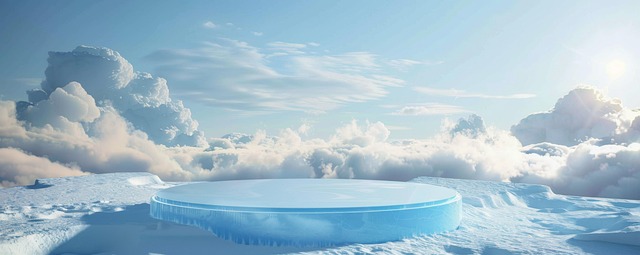Mastering texturing and shading in 3D modeling and rendering is key to creating lifelike visuals. Techniques like bump maps, normal mapping, Phong shading, and Physically Based Rendering (PBR) add detail, color, depth, and realistic lighting effects. Strategic material selection and advanced lighting methods enhance realism, enabling artists to craft cinematic-quality environments and immersive animations.
In the realm of 3D modeling and rendering, achieving realistic visual effects is paramount. This article delves into the art of detailed texturing and shading, equipping readers with essential tools for creating immersive digital environments. From understanding foundational concepts to exploring advanced techniques, we guide you through the process. Learn how to choose materials, master lighting and shadowing, and integrate these elements seamlessly. By the end, you’ll be equipped to create stunning, photorealistic renders.
Understanding the Basics of Texturing and Shading
Understanding the fundamentals of texturing and shading is pivotal for achieving realistic visual effects in 3D modeling and rendering. Textures serve as surface coverings that add detail, color, and patterns to 3D models, enhancing their realism and visual appeal. Shading, on the other hand, involves simulating light interaction with these surfaces, creating depth, dimension, and subtle variations in appearance.
By combining texturing and shading techniques, artists can craft highly convincing digital environments and objects. This process entails selecting appropriate texture maps (such as bump, displacement, or normal maps) to mimic surface imperfections and topography, while applying shading algorithms like Phong, Lambert, or PBR (Physically Based Rendering) models to accurately represent light reflection and diffusion.
Choosing the Right Materials and Their Properties
When creating realistic visual effects in 3D modeling and rendering, selecting the appropriate materials is a foundational step. Each material possesses unique properties that significantly impact the final image’s verisimility, from reflecting light like real-world surfaces to absorbing it or emitting their own glow. Understanding these attributes—such as reflectivity, roughness, and transparency—enables artists to achieve highly detailed textures and lifelike shading.
The right material choices can transform a mundane 3D model into an immersive, realistic scene. For instance, selecting a material with the right level of roughness can make a surface appear matte or glossy, while careful adjustments to reflectivity can mimic different types of lighting conditions. This meticulous process ensures that virtual environments not only look good but also behave realistically under various lighting setups, enhancing the overall visual impact in both static images and dynamic animations.
Advanced Techniques for Realistic Rendering
In the realm of 3D modeling and rendering, advanced techniques play a pivotal role in achieving realistic visual effects. Artists and designers employ intricate texturing and shading methods to bring digital creations to life with remarkable authenticity. One such technique is normal mapping, which enhances surface detail by using per-pixel displacement, resulting in complex geometry without increased polygon count. This process allows for more natural looking textures, crucial for creating photorealistic environments.
Additionally, PBR (Physically Based Rendering) has become a game changer. By simulating the interaction of light with materials, PBR enables realistic reflections, refractions, and lighting effects. It achieves this through properties like roughness, metalness, and diffuse albedo, accurately portraying material characteristics. This advanced rendering technique is especially beneficial in 3D modeling software, enabling artists to achieve cinematic-quality visuals quickly and efficiently.
Integrating Lighting and Shadowing Effects
In the realm of 3D modeling and rendering, the seamless integration of lighting and shadowing effects is a game-changer for achieving realistic visual outcomes. Lighting sets the mood and atmosphere, while shadows add depth and dimensionality to digital scenes. By carefully orchestrating these elements, artists can create scenes that mimic real-world conditions, enhancing the overall believability of the 3D models.
Mastering lighting and shadowing involves understanding various techniques such as global illumination, which simulates indirect light bouncing off surfaces, and dynamic shadows, which adapt in real-time based on the position of lights and objects. This meticulous attention to detail can transform a bland digital environment into a vibrant, bustling tapestry that captivates viewers, making it an indispensable skill for professionals in the 3D modeling and rendering industry.
By mastering texturing and shading techniques, artists can elevate their 3D modeling and rendering skills to new heights. Understanding the fundamentals, selecting appropriate materials, and exploring advanced rendering methods allows for the creation of visually stunning and realistic digital environments. Integrating lighting and shadowing effects further enhances the immersive experience, transforming two-dimensional screens into captivating three-dimensional landscapes. These techniques are essential tools in the arsenal of any 3D artist striving for photorealism or compelling visual storytelling.
